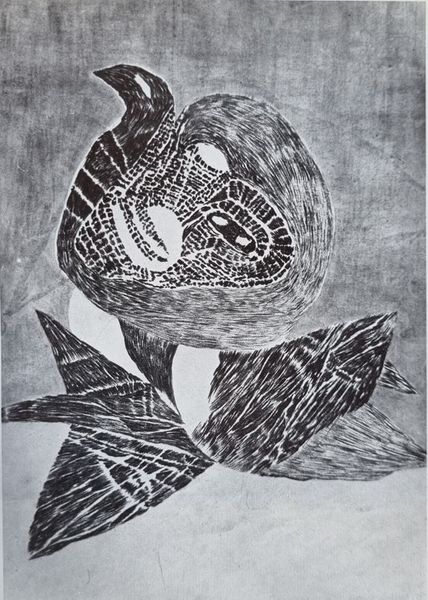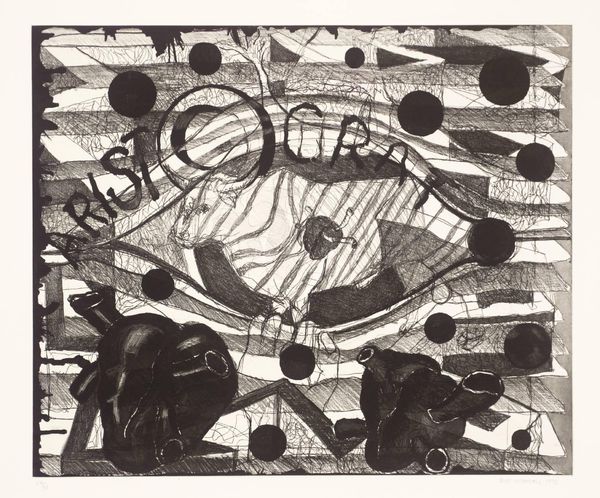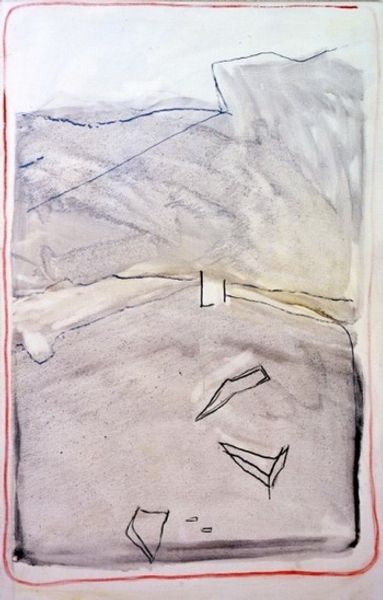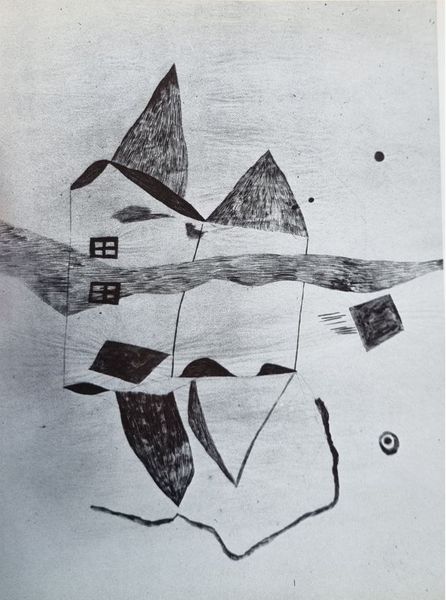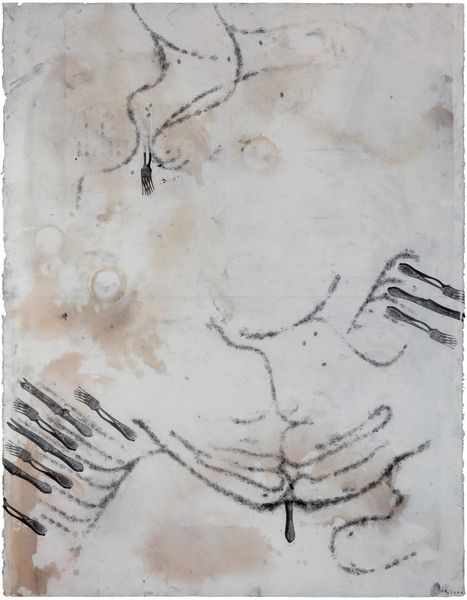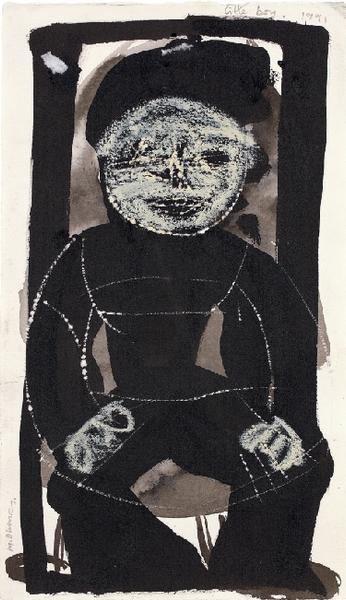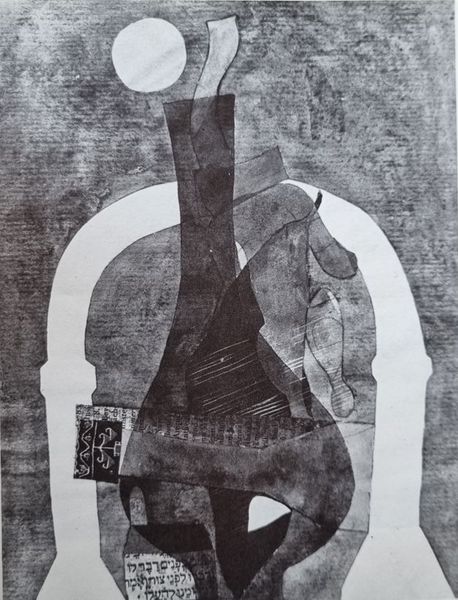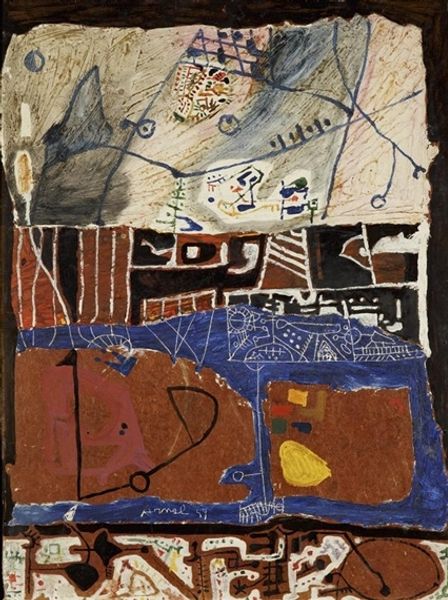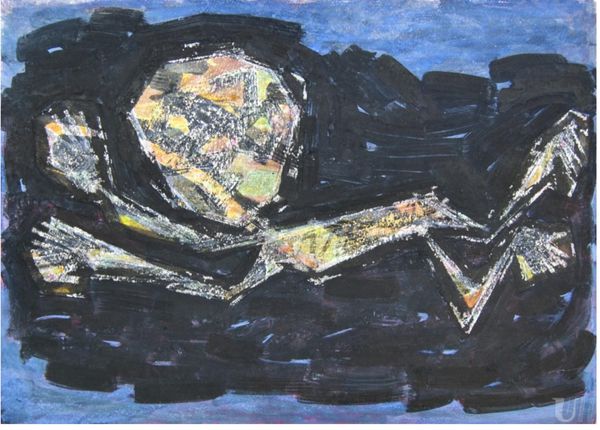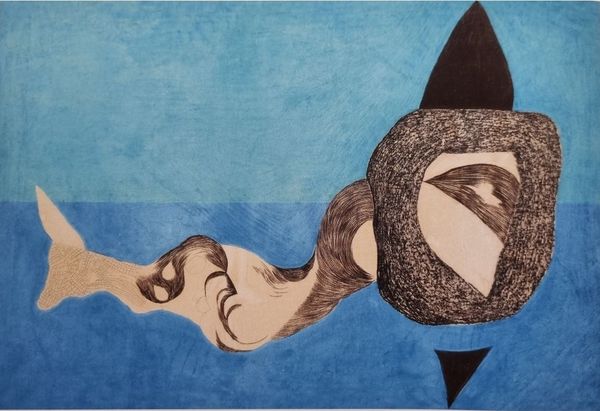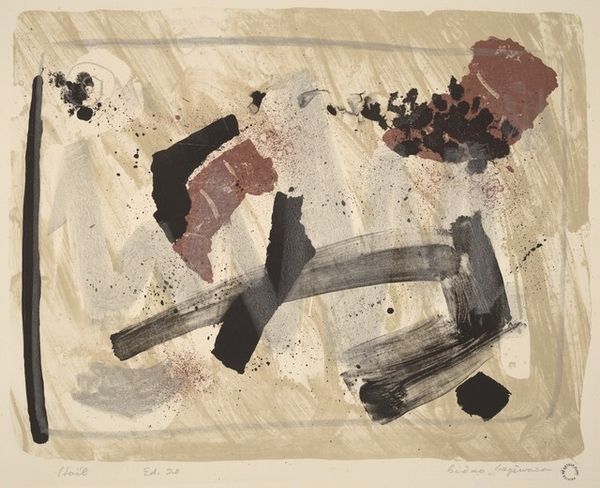
Copyright: Public domain
Curator: Vajda Lajos's "Huge Landscape Mask," made in 1938, really sticks with you, doesn't it? It’s ink and pencil on paper, with such strange geometry. Editor: It does! My immediate sense is… melancholy, maybe even a little menacing. Those sharp angles combined with that muted blue feel stark. Is it meant to represent some actual landscape? Curator: Not literally, I suspect. Vajda was deeply interested in surrealism and constructivism. The "mask" here, I think, represents a psychological landscape, pieced together like a fragmented memory or a dreamscape. The face is formed with a shoreline and the river. Editor: Interesting. And I notice the geometric abstraction gives it a rather machine-made aesthetic. It also makes me think about how often landscapes get used as national symbols, idealized or romanticized views of some idyllic place. The materiality, paper and ink—mass producible mediums that disseminate landscapes quickly to all kinds of people. This rendering however, resists that. Curator: I like your point on reproducibility. And that's so true about the romanticization. Vajda seems to dismantle any sort of easy idealization of place. Look at how the lines tremble slightly. He embraces imperfection, a kind of raw honesty, wouldn't you agree? It’s as if he’s peeling back the surface to show us something rawer, something almost violently intimate. Editor: Yes, absolutely. It's not easy on the eye, this piece. Also, those layering of forms! There are the mountains at the bottom of the page that hold their materiality and stand apart from the rendering on top. The artist uses line economically to show that there's very little, if anything, holding all of these objects in their defined places, as you've called them "masks". Curator: Exactly! It is a mask of nature and also of culture. There’s this push-and-pull in Vajda’s work, an inner turbulence laid bare. We project meaning onto the landscape, but what happens when the landscape looks back? Editor: A loaded question! What do you see, then, in this visual response? Curator: I see the reflection on that fragmented consciousness and also an invitation to dismantle our preconceptions. Editor: Indeed. A deconstruction that leaves us pondering what landscape – both internal and external – truly means.
Comments
No comments
Be the first to comment and join the conversation on the ultimate creative platform.
